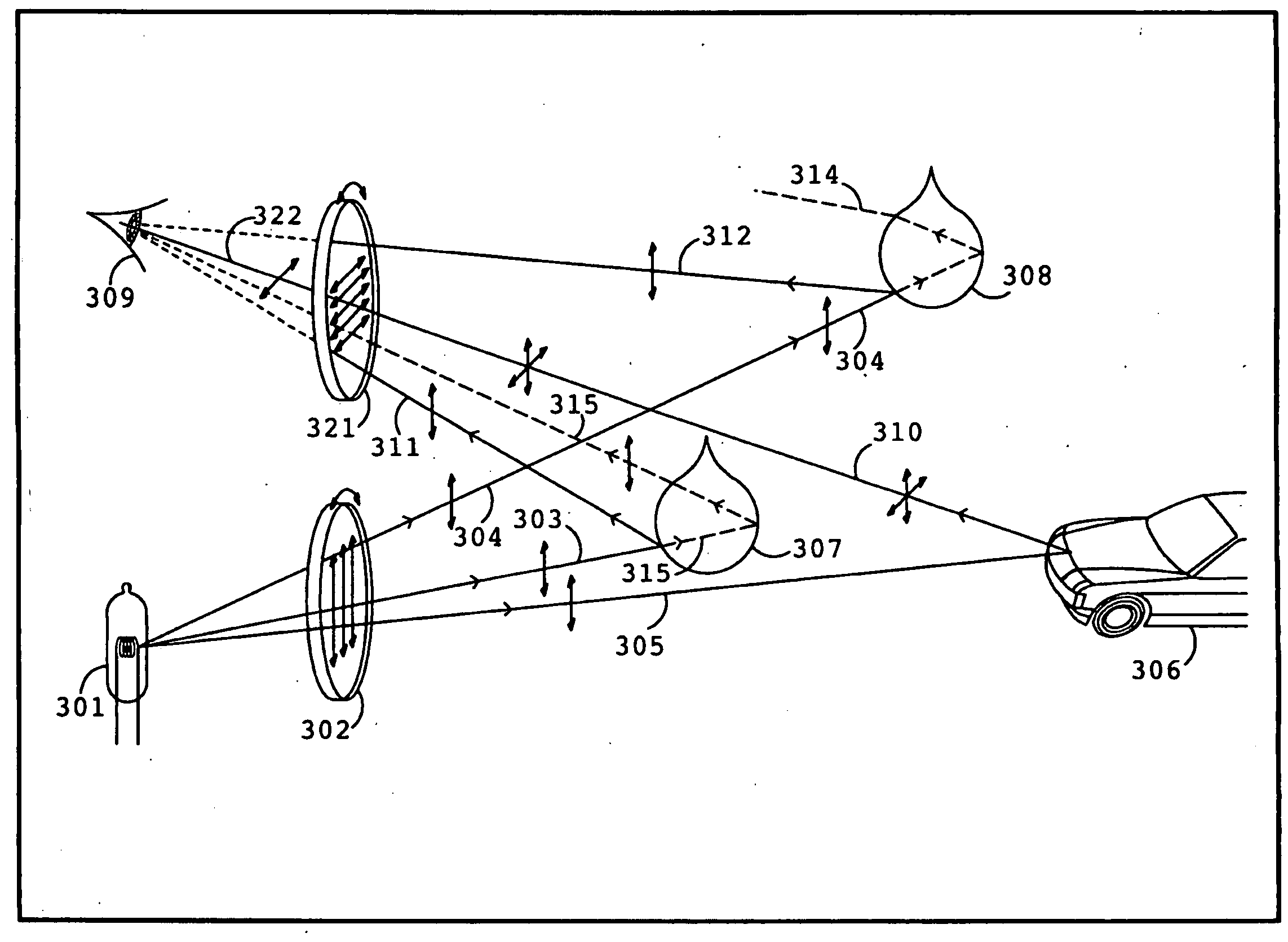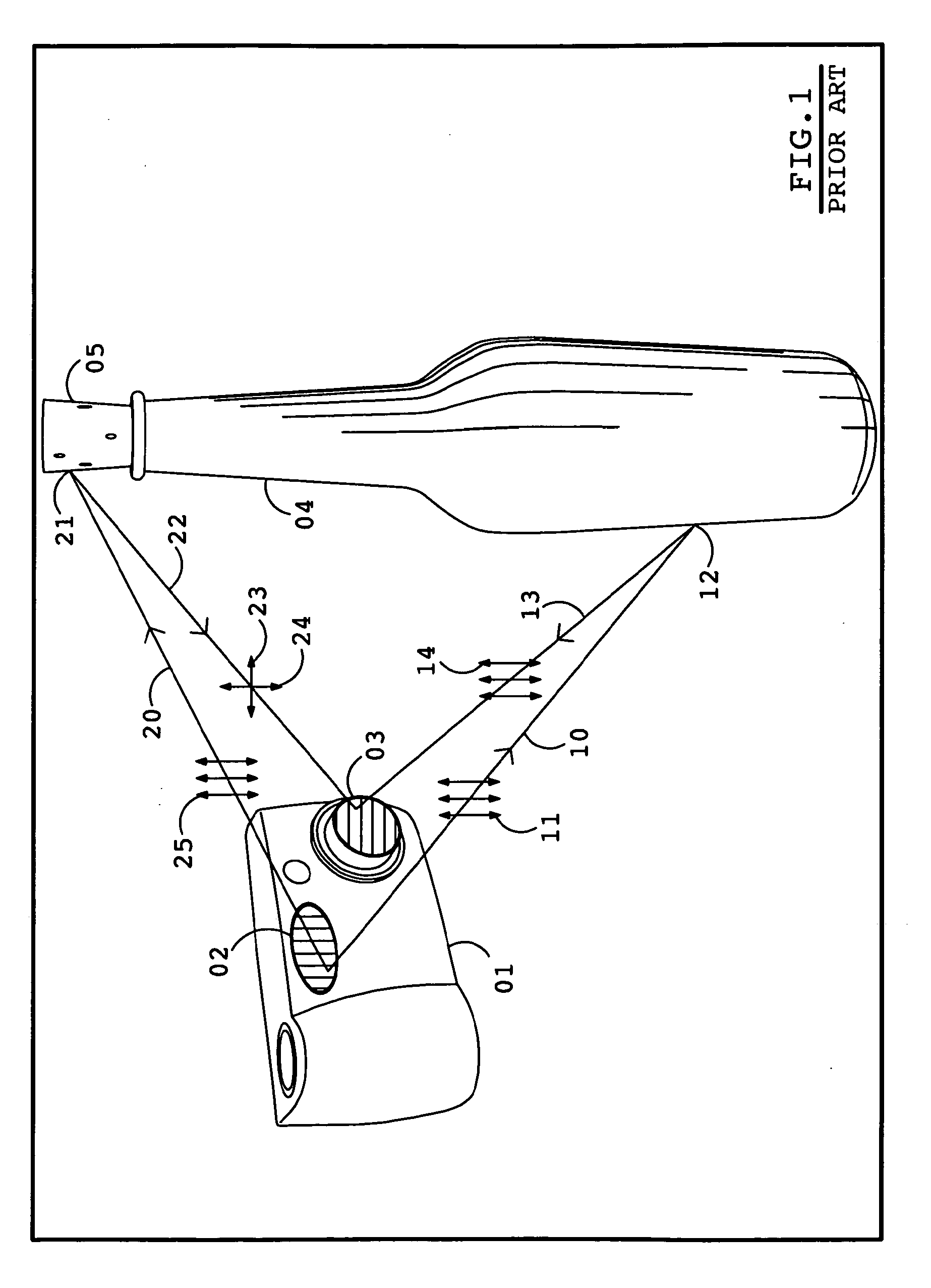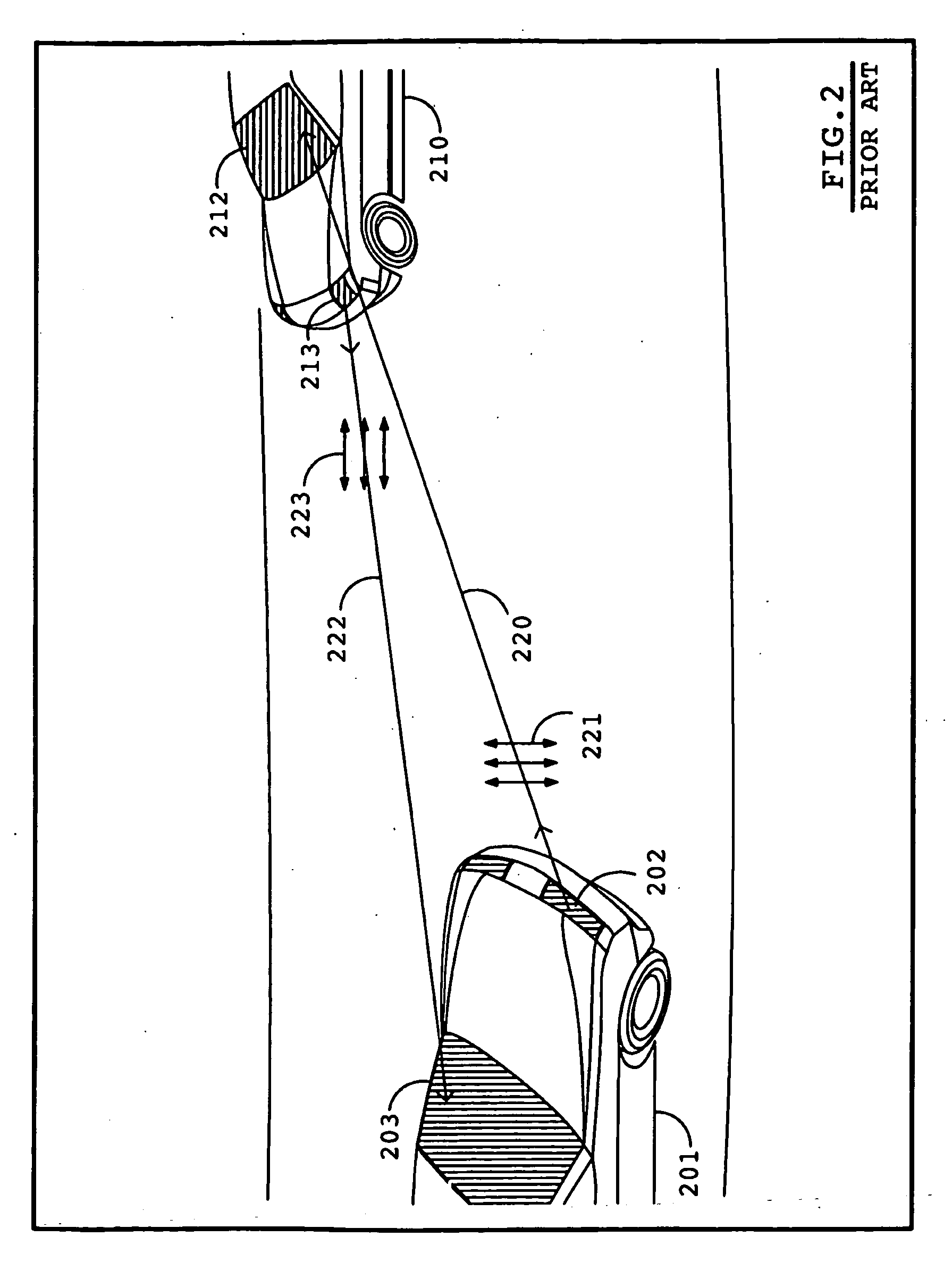Techniques For Controlling Observed Glare Using Polarized Optical Transmission And Reception Devices
a technology of optical transmission and reception device and observed glare, applied in the field of optics, can solve the problems of affecting the progress of jewelers working on intricate details, affecting the visibility of vehicles, and obscuring important visual information, so as to reduce the visibility of vehicles and enhance visible contras
- Summary
- Abstract
- Description
- Claims
- Application Information
AI Technical Summary
Benefits of technology
Problems solved by technology
Method used
Image
Examples
Embodiment Construction
[0039]In overview, the invention is directed to a visibility enhancing system that includes an adjustment mechanism for adjusting the polarization of a light source relative to the polarization of a viewing filter, so as to improve visual contrast between interposing specular media and an object to be viewed. The light source includes a light generation mechanism for generating polarized light, and an optional source polarization angle determination mechanism for adjusting the angle of polarization of the light source. The viewing filter includes a filter polarization. angle adjustment mechanism for adjusting at least one of the polarization angle of maximum light attenuation and the polarization angle of minimum light attenuation. An observer adjusts at least one of the source polarization angle determination mechanism and the filter polarization angle adjustment mechanism so as to improve the visibility of the object to be viewed in the presence of interposed specular media.
[0040]...
PUM
 Login to View More
Login to View More Abstract
Description
Claims
Application Information
 Login to View More
Login to View More - R&D
- Intellectual Property
- Life Sciences
- Materials
- Tech Scout
- Unparalleled Data Quality
- Higher Quality Content
- 60% Fewer Hallucinations
Browse by: Latest US Patents, China's latest patents, Technical Efficacy Thesaurus, Application Domain, Technology Topic, Popular Technical Reports.
© 2025 PatSnap. All rights reserved.Legal|Privacy policy|Modern Slavery Act Transparency Statement|Sitemap|About US| Contact US: help@patsnap.com



